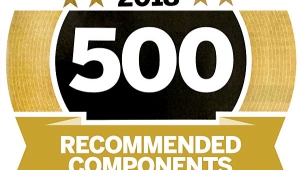| Columns Retired Columns & Blogs |
Class A
Audeze LCD-X: Why would you consider the Audeze LCD-X over the Audeze LCD-3? The Audeze LCD-3, though veiled, "digital" (too few bits of detail), and non-liquid, at least presents music as beautiful.
Not only this, but it (3) is a personal luxury product, with a gorgeous headband, ear-pads, and wood ear-cups.
There also is the issue of it (3) having phenomenal bass, on the non-Fazor version.
The LCD-X? It sounds like absolutely nothing. By nothing, one means about $600.
Audender Flow
Giving that you are Stereophile, this would be great in the Class C department. It has DSD, etc. and decent specs, but no balanced out, so no headphone enthusiast would consider using it.
Chord Mojo: A great DAC/amp. Great that you have it in Class A.
Sennheiser 650/600: certainly very comfortable, but no match for the 580. ;) While neither sounds like shit (the 600 is more natural), they lack any detail and air, although their true comfort makes them fantastic computer speakers. Still, Class C.
HiFiMan 400i: Shouldn't it be the HE-6? Where is the HE 1000? This is Class A guys.
Sennheiser IE 800: Where is this? Perhaps more detailed and fast than the HD-800 and only $1000. ($800 US). Obviously, no imaging like the HD. What an amazing headphone, the HD 800.
Omissions: Shouldn't the class A be the Stax 009 and perhaps some excessive (read: expensive) headphone amplifiers? Om.
Class B
Apogee Groove. Ok. Great. A pro-audio device.
Audeze EL-8: What? Ok. This one sounds like shit. Ok, have only heard the closed. Great cheap price ($699) and design job by BMW, but terrible sound an not even a part of the LCD-2. What a looser.
Audioquest Nighthawlk: Huh? Wah.
B&W P3: Why the P3 and not the P5 or P7? Isn't the quality of the P3 pathetic? Sound, gentlemen, sound.
CEEntrence DACPort: Ok. Great device. How about more CEntrance. Great specs.!
Master & Dynamic MD40: Is this a poor men's clothing magazine?
PSB M4U: Shouldn't this be Class E?
Class C:
Audioengine D3: for $149 a great made device with great components. However, the sound is worse than the stock Intel audio chip you'll have in your PC. Does have less hum and noise than an-in PC chip, though.
Overall: Where are the audiophile components?
Sorry to be a party-pooper.










































